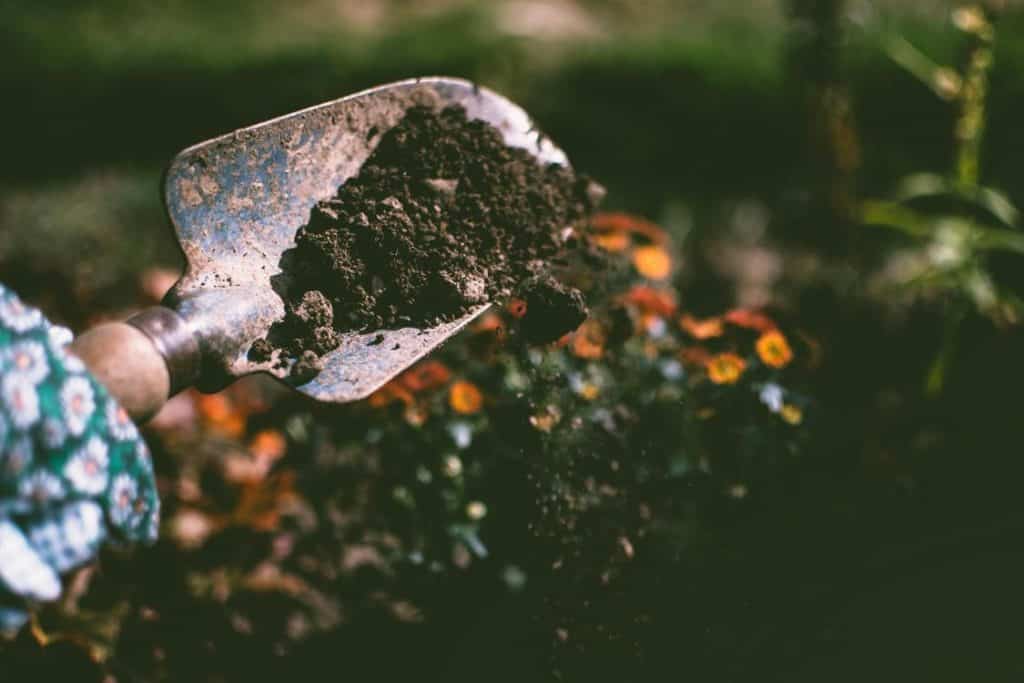If your plants are wilting or dying it could be due to heat stress. Unlike plastic, fabric pots allow the outside temperature to pass through, helping your greenery avoid overheating.
When roots reach the edge of a fabric pot, they’re air pruned rather than circling and becoming root bound. This helps the roots get the oxygen they need and results in visibly healthier and more vibrant plants.
Reduces Moisture Loss
When plants in plastic pots are exposed to direct sunlight, their soil can reach high temperatures, resulting in damage to roots. However, when a plant is kept in a fabric pot, the breathable material keeps the soil temperature much lower. This helps to preserve the quality of the planting mix and prevents the roots from becoming brittle.
In fact, a study conducted by Texas A&M University found that the root zone of a fabric pot remained cooler than that of a plastic pot when placed in direct sunlight. The breathable fabric also allows air to flow through the container, keeping the root system well aerated and healthy.
The breathable fabric used to make these pots also encourages healthy root growth by “air pruning” the root tips for healthier, more robust plants. When the roots reach the edge of the container, they sense that they are nearing their limit and are cut off by the breathable fabric. This removes the girdling roots that restrict nutrient uptake, and results in more fibrous small roots which can absorb water and nutrients more efficiently.
This also allows the plant to retain more of its moisture, which is a major concern when growing in containers. When water evaporates, it takes valuable nutrients with it. In a study that tested the difference between a plastic and fabric pot, the evaporation of water from a 1 gallon fabric pot lost 37% of its total water weight in a 24 hour period. In a plastic pot, the same amount of water only lost 12% in a similar timeframe.
Proper soil sizing is essential when growing in containers. This includes using a good planting mix that is well-draining and nutrient rich to support healthy growth. There are several planting mix options available to fit the different needs of various crops. These range from a standard peat moss mix to coco coir, composted bark or wood chips and perlite or vermiculite. Many potting soil mixes are tailored to specific plants by including slow-release fertilizers and moisture control additives.
Air Pruning Roots

A plant can become root bound when its roots extend past the boundaries of its container. When this occurs the roots can spiral, twist, kink and become strangled which is not only unhealthy for the plants but also prevents them from absorbing water and nutrients. Fabric pots help to prevent this problem as they allow air to pass around the roots. This process is known as air pruning and it helps to stimulate the roots to grow into a branched structure that allows them to absorb more water and nutrients.
Unlike plastic containers which have holes in them, fabric pots have permeable fabric allowing air to reach the rootzone. This causes the root tips to prune themselves when they come into contact with air which stops them from extending too far beyond their container. When a root tip contacts air it shrivels and sends a hormonal signal back to the stem-root junction that triggers branching. Over time this creates a mass of fibrous roots that is healthier and enables the plant to better absorb nutrients, water and other elements in its environment.
When a plant grows too large for its container it will often develop long twisted, squiggled roots that look like cobwebs, spaghetti or rope. These are referred to as circulating roots and are caused by the root trying to seek out oxygen in the soil which is limited due to poor container design and nutrient deficiencies. Using a different container size or repotting the plant into a larger container will help to remedy this problem.
Fabric air pruner pots help to resolve this issue as they are designed with a porous material that encourages root entrapment. This works in a similar way to air pruning except it has the added benefit of reducing transplant shock for the plant as well as saving on water and nutrient costs for the grower.
The tight weave of the fabric also helps to save on nutrient and water costs by preventing evaporation. In addition the fabric is resistant to load stress which means it will not deform as quickly as plastic containers that tend to wear out or tear over time. In the long run this can save on expensive repotting expenses and reduces the amount of nutrient loss and abrasion during handling of the containers which can lead to rot or other problems.
Temperature Control
A key factor in healthy plant growth is oxygen flow. While plastic pots block this flow, fabric pots allow air to pass through the breathable material and into the soil. This results in a richer root environment and enhanced nutrient uptake. Additionally, this breathable material helps to regulate soil temperature, preventing excessive heat buildup in direct sunlight or hot weather.
A healthier root system also leads to stronger, more vibrant plants. With improved aeration and air pruning, plant roots become more dense and branch out, providing a strong foundation to support the rest of the plant’s development. This in turn leads to higher leafage, flowers and fruit production. In addition, a dense root system is more resistant to pests and diseases.
The permeability of fabric pots helps promote proper drainage as well. This prevents water from pooling at the bottom of the pot, which can lead to rot and other problems. It also allows excess water to quickly bleed through the fabric, minimizing overwatering.
Finally, the breathable material of fabric pots also helps control soil temperature. In plastic pots, excess heat can build up in direct sunlight or in hot weather, damaging the soil and reducing the health of the roots. In contrast, the breathable fabric of a smart pot allows heat to dissipate more effectively, keeping the soil at a more optimal temperature for a healthy, thriving plant.
When it’s time to repot, the porous nature of fabric pots makes this process easier than in traditional plastic containers. This is because when the roots reach the edge of the pot, they naturally sense that the outside soil is drier and stop growing there (a process called “air pruning”). This helps to prevent the roots from becoming pot bound and promoting a healthier, more robust root system overall.
The benefits of using a fabric pot for your indoor plants go beyond just saving money and improving your green thumb. In fact, these smart pots can make your plants happier and healthier, resulting in brighter, more vibrant foliage! So, if you’re ready to give your indoor plants a boost, switch to a smart pot today and see the difference for yourself.
Easy to Store
Fabric pots allow for more aeration than traditional planters, preventing root circling and keeping the soil at an optimal level of moisture. It’s also easier to prevent overwatering with fabric pots than it is with plastic ones, since water drains easily out the bottom of the container. This prevents excess moisture that can lead to soil-borne diseases such as Phytophthora and Pythium, which can cause devastating root rot.
Because fabric pots are breathable, they also help to keep the roots healthy by air pruning them. This means that when the roots grow to the edge of the pot, they are “air pruned” and do not continue to circle the inside of the pot (pot bound). This enables more fibrous feeder roots to form, making for a dense and healthier root system.
In addition, because of the aeration provided by the breathable fabric, the roots can get more oxygen, which helps them thrive and produce energy. This is important because plants need oxygen to create energy and to perform the processes that help them take in nutrients, minerals, and water. In plastic pots, if the roots do not have adequate access to oxygen, they will stop growing altogether or will only be able to take in oxygen from the top layer of soil.
The best part about using fabric pots is that they are easy to store. All you have to do is empty them of their potting soil, wash them out with baking soda and vinegar to remove any pests that may be hanging out within, then fold them up for storage until the next spring. They can be stored outdoors or in a garage or shed.
When it comes to winterizing your fabric pots, you can use a cover crop such as hairy vetch, crimson clover, peas or wheat to provide a nutrient boost to the soil and to help protect the planters from harsh weather conditions. This can be done in zones 9-13 and provides a great way to improve your soil without needing fertilizers. The roots will break down the crop and add natural nutrients to the soil.




